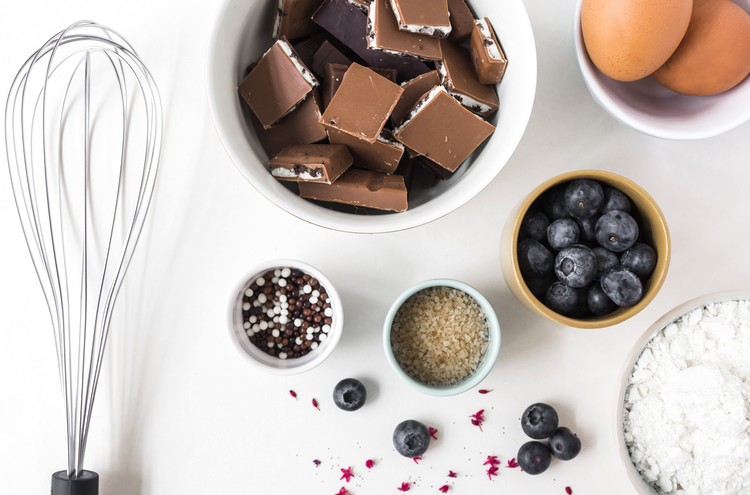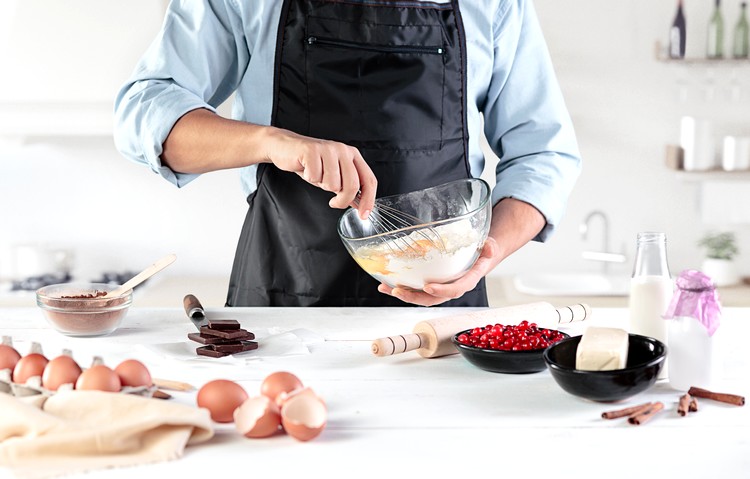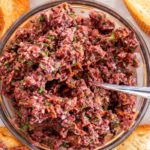To understand why the cake batter gets bubbles is a question of many people, and know that there are many causes for this to happen to you. Often, this occurs more in the step of mixing the ingredients.
As much as the bubbles do not diminish the flavor of the recipe, they certainly influence the look and, especially if you intend to sell your recipes, this can be a waste factor. See the causes and how to fix it!
Contenus
Why is the cake batter bubbly? 6 reasons for this!

1. Wrong choice of wheat flour
Wheat flour plays a very important role in the most varied cake recipes, and it is not new. Because it has a considerably high gluten content, the flour gives it elasticity, leaving the fluffy dough and malleable.
However, there are many types of flour and each one has specific indications. Choosing the wrong flour for your recipe can easily result in a cake full of bubbles, even damaging baking time.
This is because some flours have the addition of yeast, for example, which encourages early dough growth. In some cases, the dough rises even before going to the oven, as the process has been accelerated, and this favors bubbles.
2. Beat the mixture too fast
When you’re not so familiar with making cakes, it’s normal to think that the faster you beat the mixture, the better it gets. However, this is not exactly the case. The ingredients must be mixed carefully, just to homogenize and aggregate.
Of course, some recipes require more mixing time and more vigor, but these are rare cases. So if you want to avoid blisters at this stage, mix your ingredients until you feel creamy, well mixed and ready.
It is also worth mentioning that this care must be even greater when adding the flour. I recommend that you add the sifted flour little by little, so as to fully incorporate the mixture and forget about the mixer at this stage.
3. Failing to follow the method of preparation and ingredients
Only the experience of many years making cake allows you to get the recipe right “in the eye”, otherwise, it is essential to follow the requested ingredients to the letter. Thus, one of the ingredients stands out more than others, which is yeast.
The desire to make a cake yield and grow more, can lead the unsuspecting to add « just a little more » of yeast. However, this causes the cake to grow disproportionately, favoring the ideal structure for bubble formation.
4. Not mixing ingredients correctly

If, on the one hand, excessive and fast mixing can harm the cake, on the other hand, not mixing properly is just as bad, especially in the flour stage.
So, regardless of whether you use a fuê, a spatula or even a spoon, make sure you incorporate each ingredient completely.
For example, when the mixture has flour pellets when baking, the cake’s growth is uneven in the places where the flour is concentrated, thus causing the dreaded bubbles. So, mix it right!
5. Pour the mixture into the mold and place it in the oven
This tip is one of those tricks that most people in the old days know better than anyone else. Answer: when you mix or beat the dough and pour it into the greased and floured pan, do you do anything else or take it straight to the oven?
Did you know that tapping the shape on a surface such as a kitchen table or sink is one of the best strategies to prevent blisters?
When you do this, it automatically eliminates excess air build-up in the dough, which is precisely what helps to leave room in your mix. So put this step further before baking. You bet, it makes all the difference!
6. Lack of attention to oven temperature
To streamline the oven preheat do you end up raising the temperature, but forget to lower it when putting the cake in the oven?
The result is a very hot oven for the dough, causing a very rough seal in certain areas of the cake. However, there is a high chance that other parts will be undercooked, meaning blisters are sure to occur.
This can also happen because of an unregulated oven, which is even worse as it is difficult to identify the problem. Therefore, if you notice that at the end of the preparation time, the cake is still raw in certain parts, it is very likely that it will need adjustment.
Also, pay attention to the preheated oven, it needs to be for at least 15 minutes at 180°, this ensures a well-baked cake.
Now that you know why the cake batter is bubbly, it’s time to better plan the execution of the steps, ensuring that nothing gets out of hand.
I really hope you enjoyed the tips, and that they help your recipes to be perfect. Be sure to share with friends, until next time!


